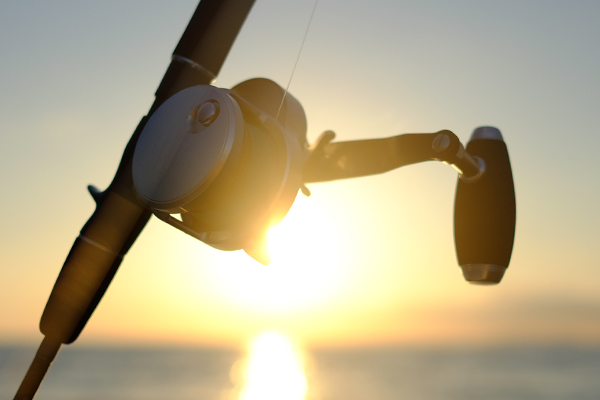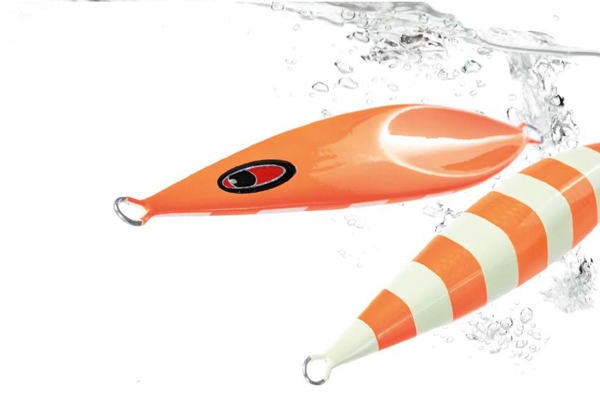Why do you need a leader?
In the game of fishing, I think we have lots of blind acceptance of theories of what is good and bad. Too much faith in our own experience and advises from experts that we just believe things without questioning, examining or testing. Sometimes I get questions from beginners and they give me fresh new look on things.
That is why I like the kind of websites that really do experiments to prove or challenge all the beliefs, like this one.
He does a lot of experiments on line and knots. He doesn’t just buy “This knot is strong.” He does experiments to see how much exactly it is strong. He’s great. He’s a wonderful source of experimental facts to me.

Why do you need a leader?
I would like to talk about this question which people ask me every now and then.
PE braided fishing line was born in the 90s and made revolution in all fishing games. PE line is light, strong and sensitive (as it doesn’t stretch.)
But it has its disadvantages.
- PE line is weak against knots.
- PE line is weak against impacts.
- PE line is weak against frictions.
In order to compensate these disadvantages, we attach fluoro or mono leader at the end of our line system.
In order to connect knot-weak PE line with the leader, PR knot was invented and was proven to maintain 100% of the line strength.
>> How-to Shimano Bobbin Winder Light
OK now. Let’s see how Jigging Soul experimented to prove these disadvantages of PE line.
PE line is weak against knots
First he chose good old clinch knot.
He did the same test with fluoro line before and clinch knot showed 85% strength. That was pretty good. Good knots die hard.

Now he tied PE line #2.0 (9kg test) with clinch knot to the ring to see how PE line holds it. He tested 3 times and the result is, PE line could only hold it at average 3kg. It’s only 33% strength. PE line just slid away and untied the knot itself.
Clinch knot holds 85% strength with fluoro and 33% with PE
Next he chose what is called “Caterpillar Knot” here. This knot is so simple to make and he has proved in the past that it maintains 100% strength with fluoro line. This knot is highly recommended for jigging.


Now he tested this caterpillar knot with the same PE line #2.0 (9kg test). He tested 3 times and the result is, PE line broke at 6kg. It’s 66% strength. As the tension increased, PE line moved in the knot and the friction cut the line.
Caterpillar knot holds 100% strength with fluoro and 66% with PE.
PE line is weak against impacts
This is another issue anglers point out for the downside of PE line. But I don’t think it’s not worth a discussion.
PE line doesn’t stretch as much as fluoro or mono.
Here are the stretch percentage before break on each lines:
- Mono, 20% – 45%
- Fluoro, 17% – 37%
- PE, about 4%
(from YGK)
PE doesn’t stretch, so the impact will be more direct, therefore, PE line is weak against impacts… That’s the idea.
When PE line came out in the 90s, many experts said PE line was not good for lure fishing, certainly not for jigging. Sato Sensei also despaired PE line for jigging first in his own article in 1994, but he proved himself wrong and he became the first jigging expert who started using PE line on an overhead reel for jigging. Now they all use PE line.
Because of its non-stretching property, PE line takes on more force from impacts, but the line is not always in a straight line with the jig. There is line slack with the current pushing the line and the boat being pushed away from the jig by the wind. There are rod and reel drag too. In reality, there are many cushioning factors except the line stretch. Now no experts get the line break at the strike and complain PE line is weak against impacts.
PE line is weak against impacts, true, but in reality of the fishing field, this should be worried about or prepared for.
PE line is weak against frictions
At the tip of our line system, the line is very likely to come under friction, against fish tooth and lips, against fish fins and scales, and against bottom structures.

Jigging Soul did an experiment on how much PE reduces its strength against friction.
He used a pinch to keep the same friction. He gave 3 or 4 rounds of brush on PE line and it broke. Fluoro or mono line of the same strength can take 10 rounds of brush with this and none broke. Well, of course, for the same strength, these lines are much thicker.
Now, he brushed on PE line just one stroke. See how PE line became fluffy from the stroke.

And he gave a tension to this line and scaled the breaking weight.
He tested 3 times and the result is:
This 10kg test PE line held only about 2kg. Surprising. Only 18% strength. This is no comparison with mono or fluoro. Very vulnerable. Much more vulnerable than many people think.
Damaged fluffy PE line only holds 18% strength.
So, this is why we need leader. In order to keep PE line away from fish kicks and bottom structures, it is recommended to have 5m – 10m of fluoro leader.
Related Posts
1 Comment
Leave a Reply Cancel reply
Categories
- 1. SPJ (57)
- 1-1. Principles (9)
- 1-2. Techniques (11)
- 1-3. Setup (17)
- 1-4. FAQ (19)
- 1-5. Tackles (3)
- 1-6. Video Gallery (2)
- 2. Other Offshore Games (5)
- 3. Fishing Report (105)
- 3-1. Totos (25)
- 3-2. Readers (72)
- 4. Fish Cooking (19)
- 4-1. Iki-Jime (3)
- 4-2. The Art of Sashimi (5)
- 4-3. Recipe (7)
- 4-4. Seasoning (3)
- 5. Fishing Charter (6)
- Fish (12)





[…] artikel ini adalah daripada laman web Japanese Angler Secret – Why do you need a leader oleh Mr. […]